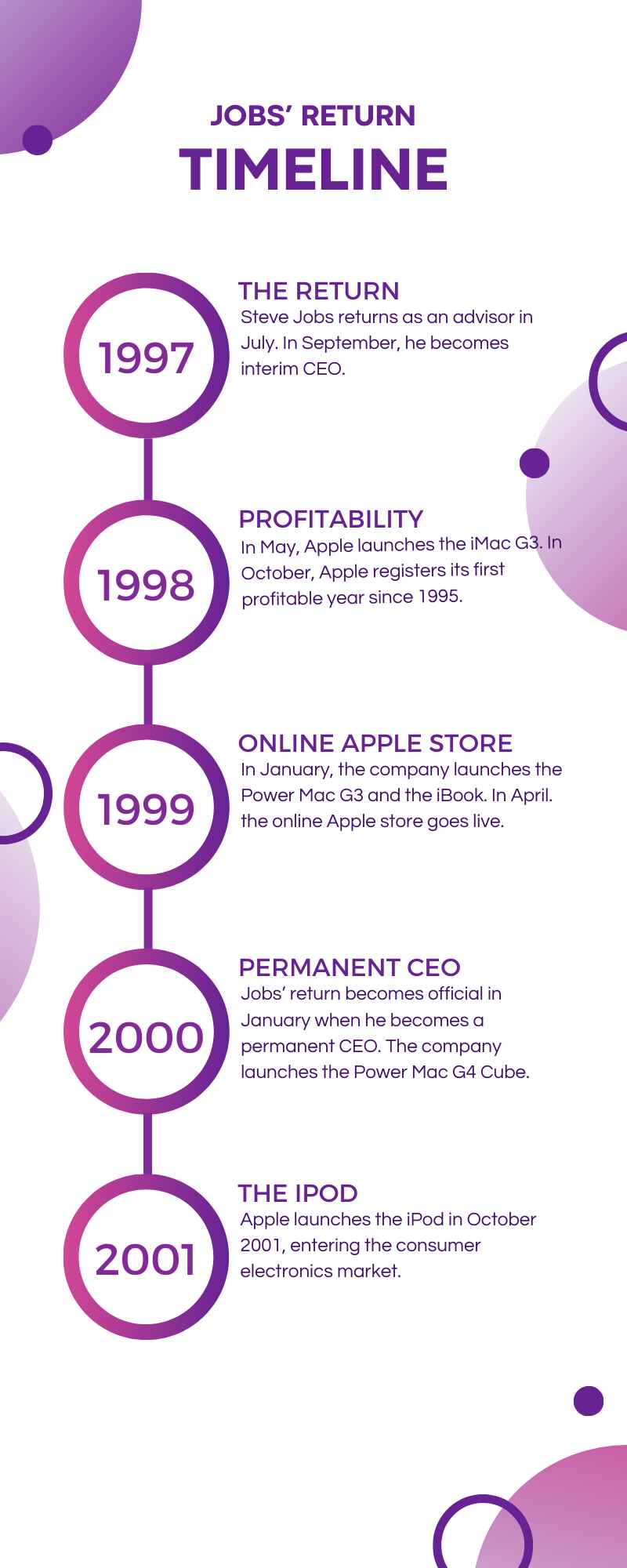
TL;DR: Steve Jobs’ 1997 “Think Different” speech marked the beginning of Apple’s greatest comeback story of all time. From a net loss of $1.05 billion in 1997, the company registered a profit of $309 million in 1998. With this speech, Steve Jobs brought back clarity and focus to Apple’s product line, distribution, and marketing communication.
So What: The keynote is packed with lessons for marketers and communicators. Jobs had discovered the effectiveness of brand-value-based advertising over the traditional product-focused approach. And “Think Different” became one of history’s great advertising campaigns. Here’s where it started.
Imagine working for an organization teetering on the edge of bankruptcy. In early 1997, that was Apple. No one knew then that Steve Jobs’ return to the company’s helm would herald a revolutionary transformation, redefining the tech industry and its marketing practices.
One of the key drivers of this turnaround was Steve Jobs’ 1997 speech, entitled “Think Different.”
After Jobs was forced out of the company, Apple lost its way. It had an unclear product line with a lot of side bets (remember the Apple Newton?). Its slow and inefficient distribution compounded the problem, putting the company on the path to bankruptcy.
When he returned as interim CEO in 1997, Jobs adopted a humble but decisive approach to addressing the organization’s shortcomings, as well as overhauling its marketing communication. Here are the communication techniques Jobs used to set new standards in marketing and branding, pulling off what many would call The Greatest Comeback Story of All Time.
 Created with Canva.
Created with Canva.
What Jobs Did
To save the ailing giant, Steve Jobs ended the costly warfare between Apple and Microsoft, agreed to support Microsoft products on Apple devices, and securing a $150 million injection of capital from Microsoft in the deal. With the immediate danger of bankruptcy averted, he went to work:
- He simplified the product range, eliminating 70% of the products and renewing focus on the remaining 30%.
- He overhauled distribution, focusing on consumer needs and realistic timelines.
- He adopted effective communication strategies, focusing on brand values instead of technical specifications.
- He launched the “Think Different” advertising campaign.
- He created a clear vision and communicated it successfully, securing the buy-in of employees and stakeholders.
“I came out of the meeting with people who had just gotten their project canceled, and they were three feet off the ground with excitement because they finally understood where the heck we were going.”
 Jobs managed to do more with less. Created with Canva.
Jobs managed to do more with less. Created with Canva.
Why His Approach Worked
Steve Jobs’ 1997 speech “Think Different” was the first salvo of his Apple turnaround strategy and – as it would later turn out – the mother and father of inspirational business speeches.
What made it so good? Here’s what communication and marketing experts can learn from it.
Clarity and Focus: Simplify the Message
Jobs simplified many aspects of Apple’s existence as its new interim CEO. He ended the “war” with Microsoft, simplified the product range, and redefined the marketing approach of the company.
- By ending the fierce competition with Microsoft, Jobs gave Apple a new chance for greatness. “We have to let go of this notion that for Apple to win, Microsoft has to lose.”
- Jobs dropped 70% of the products Apple had lined up to free up resources needed to make the remaining 30% successful. “I couldn’t even figure out the damn product line after a few weeks…I started talking to customers, and they couldn’t figure it out either.”
- He reinvented and simplified Apple’s marketing approach. “We’re not going to get a chance to get people to remember much about us. No company is. And so we have to be very clear on what we want them to know about us.” Deeming a technical specifications-focused marketing approach too complicated, he opted for value-based marketing.
As a marketing professional, focus on key points to simplify complex messaging. Focus less on the tech specs, and more on the value they get.
Engagement and Excitement: Inspire Your Team
Vision and passion are contagious. People like to know where they’re going and what they must do to get there. Clarity can be incredibly liberating and exhilarating. That explains why people who understood Jobs’ vision for the organization didn’t mind having their projects canceled.
“We’re trying to get back to the basics of great products, great marketing, and great distribution.”
Communicate a compelling vision to your team to lend direction to your passion and get people to buy into your ideas.
Customer-centric Approach: Listen and Respond
Jobs identified slow manufacturing supplier and distribution channel pipelines as some of Apple’s most significant weaknesses. He overhauled these pipelines, removing inventory from them and focusing on communicating with customers in real time about their needs. No one is smart enough to guess five to six months in advance what the customer wants, Jobs said in his speech.
The customer defines the direction of the organization’s distribution efforts, according to Jobs. He promised his audience significant innovations in the manufacturing and distribution side of the business to align it better with its customers’ needs.
Align your organization’s short and long-term strategy with the needs of your customers based on the feedback they provide.
Brand Values: Communicate Core Beliefs
Through the success of the “Got Milk?” campaign, Jobs realized people responded better to brand values than product-focused advertising. He aligned Apple’s “Think Different” campaign with “the misfits, the rebels, the troublemakers, the round pegs in the square holes,” people capable of out-of-the-box thinking and innovation, making their genius the guiding compass of the organization.
By defining Apple’s brand values, Jobs also proclaimed his vision for the company: an innovator willing to go the distance to change the world.
 Created with Quozio
Created with Quozio
Determine why your organization exists, what it wants to accomplish, and what values your brand stands for, and communicate it to people.
Emotional Appeal: Connect on a Personal Level
Steve Jobs’ marketing techniques are customer-centric. The “Here’s to the Crazy Ones” ad of the “Think Different” campaign is a skillfully crafted appeal to emotion, humanity, and temerity.
Its message resonates deeply with the audience to this day, as it unites us in our humanity. It is also a textbook example of emotional storytelling in ads.
Apple celebrates the accomplishments of people like Albert Einstein, Martin Luther King Jr., and Ganhdi – and by aligning with these great historical figures, the company implies its products will also change the world.
Emotional storytelling always engages the audience.
If you’re looking to create high-quality content that resonates with your audience, you can “think different” with the award-winning Media Shower marketing platform. Click here for a free trial.